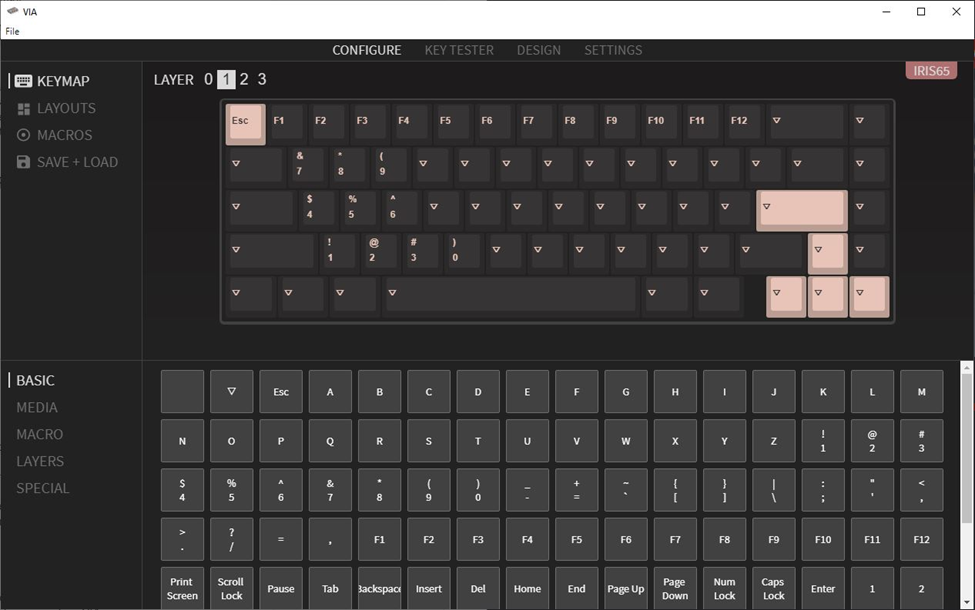Tom's Hardware Verdict
The IRISLabs JRIS65 is an awe-inspiring barebones kit that does more than others for much less.
Pros
- +
Affordable
- +
Hot swap PCB
- +
Coiled cable
- +
Carrying case
- +
Gorgeous exterior
- +
QMK/VIA support
Cons
- -
Doesn’t come with stabilizers
- -
JST cable is a bit too short
- -
No exact release date
Why you can trust Tom's Hardware
Mechanical keyboards aren’t cheap (though you can find some decent budget-priced mechanical keyboards if you look), and custom mechanical keyboard kits are a money pit — there’s no other way to put it.
No matter how “worth it” a keyboard kit feels, spending $500 or even $863 on a custom keyboard kit is tough — especially when plenty of mass-produced mechanical gaming keyboards feel good and won’t break the bank. But there are some custom keyboard kits that truly stand out, and show us why keyboard enthusiasts are willing to spend more on custom kits over pre-built planks.
The IRISLabs JRIS65 is one such stand-out: A 65 percent gasket mount barebones mechanical keyboard kit with a gorgeous exterior in a range of colors, spectacular build quality, and excellent value — starting at $165 (with certain colors topping out at $180).
Specs
| Switches | N/A |
| Lighting | N/A |
| Onboard Storage | Four profiles |
| Media Keys | With FN or configurable |
| Connectivity | USB Type-C to Type-A |
| Cable | 5-feet, coiled |
| Additional Ports | N/A |
| Keycaps | N/A |
| Software | QMK/VIA |
| Dimensions (LxWxH) | 317.5 X 114.3 x 25.4mm |
| Weight | 2.8 pounds |
Design of the IRISLabs JRIS65
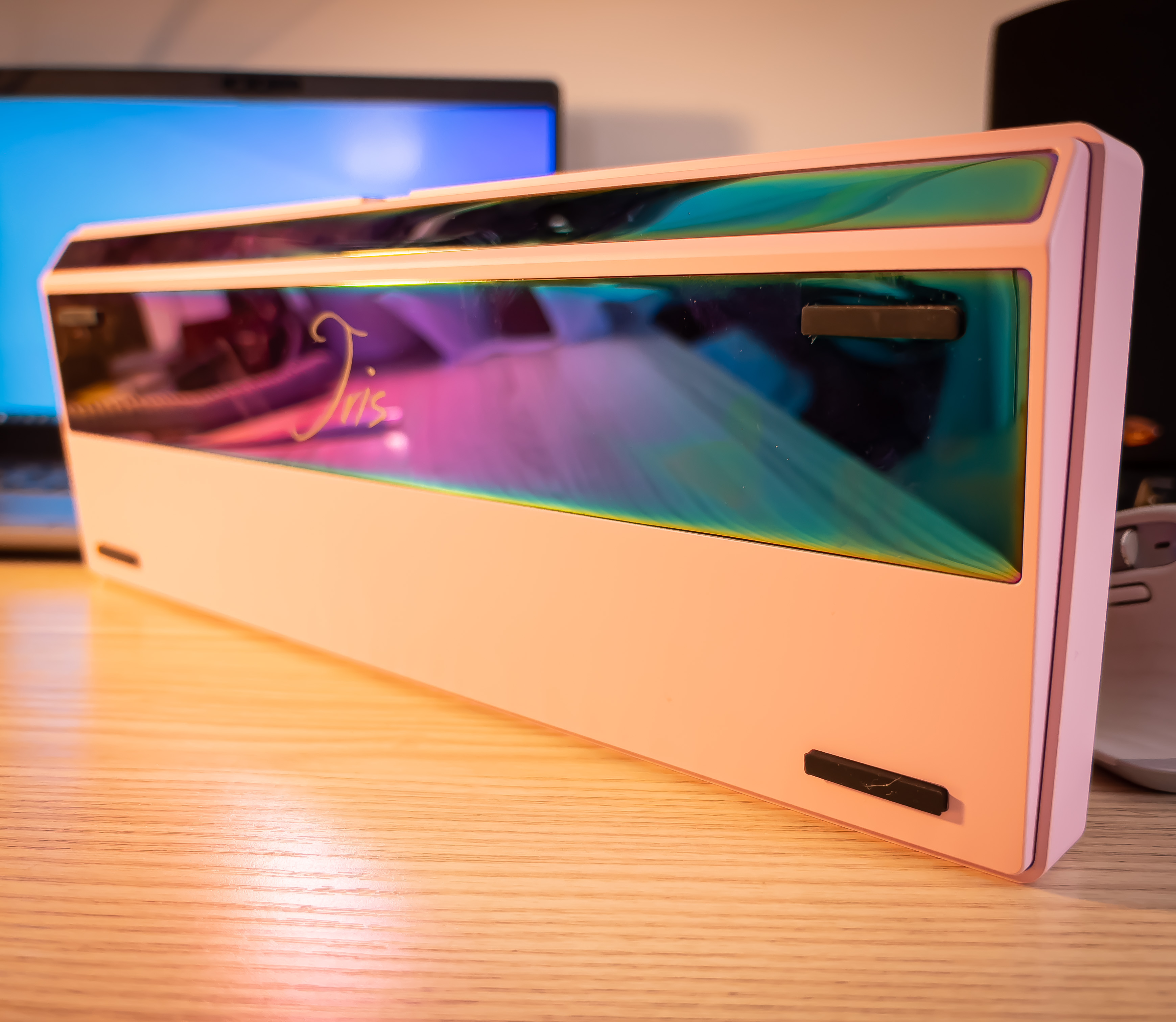
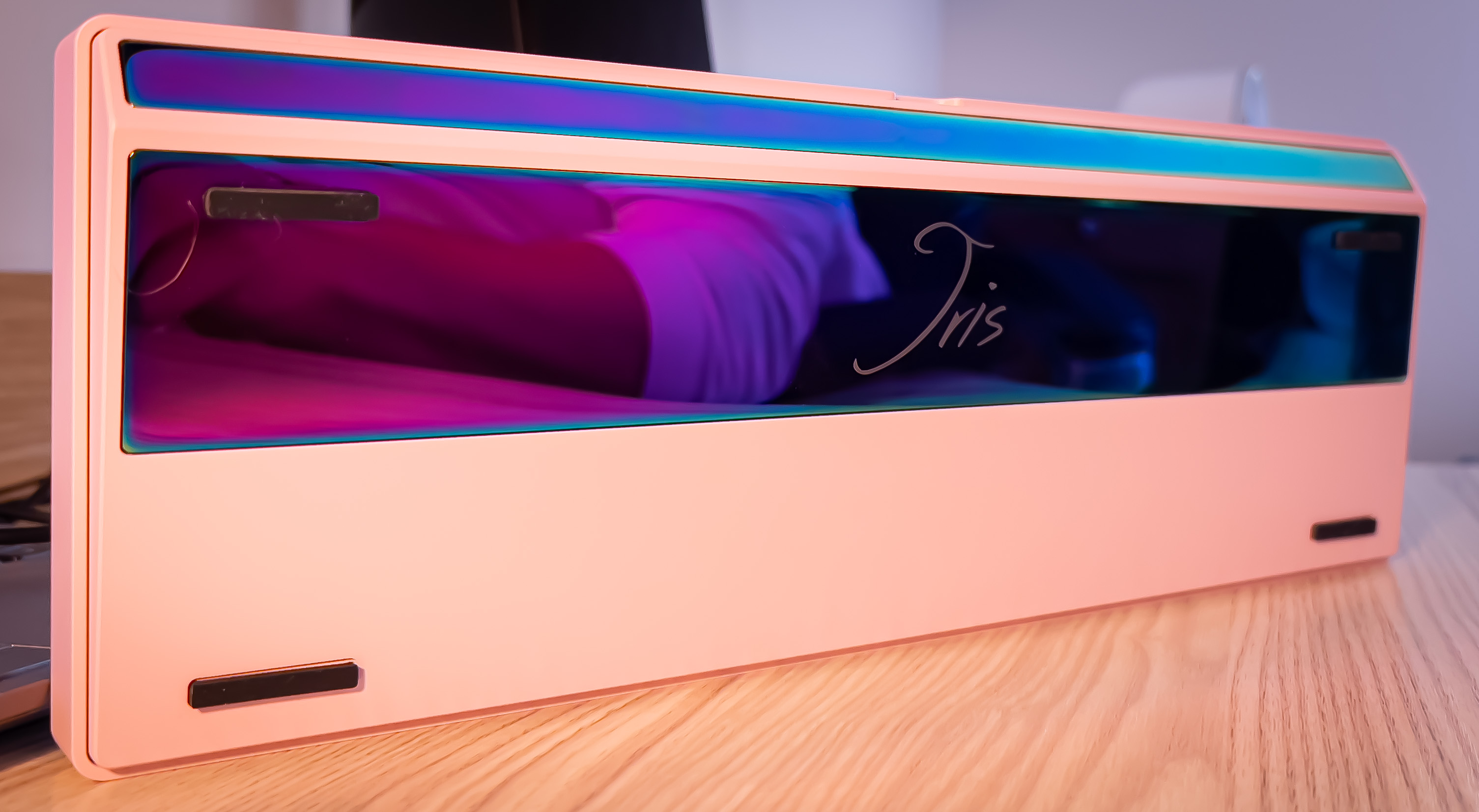
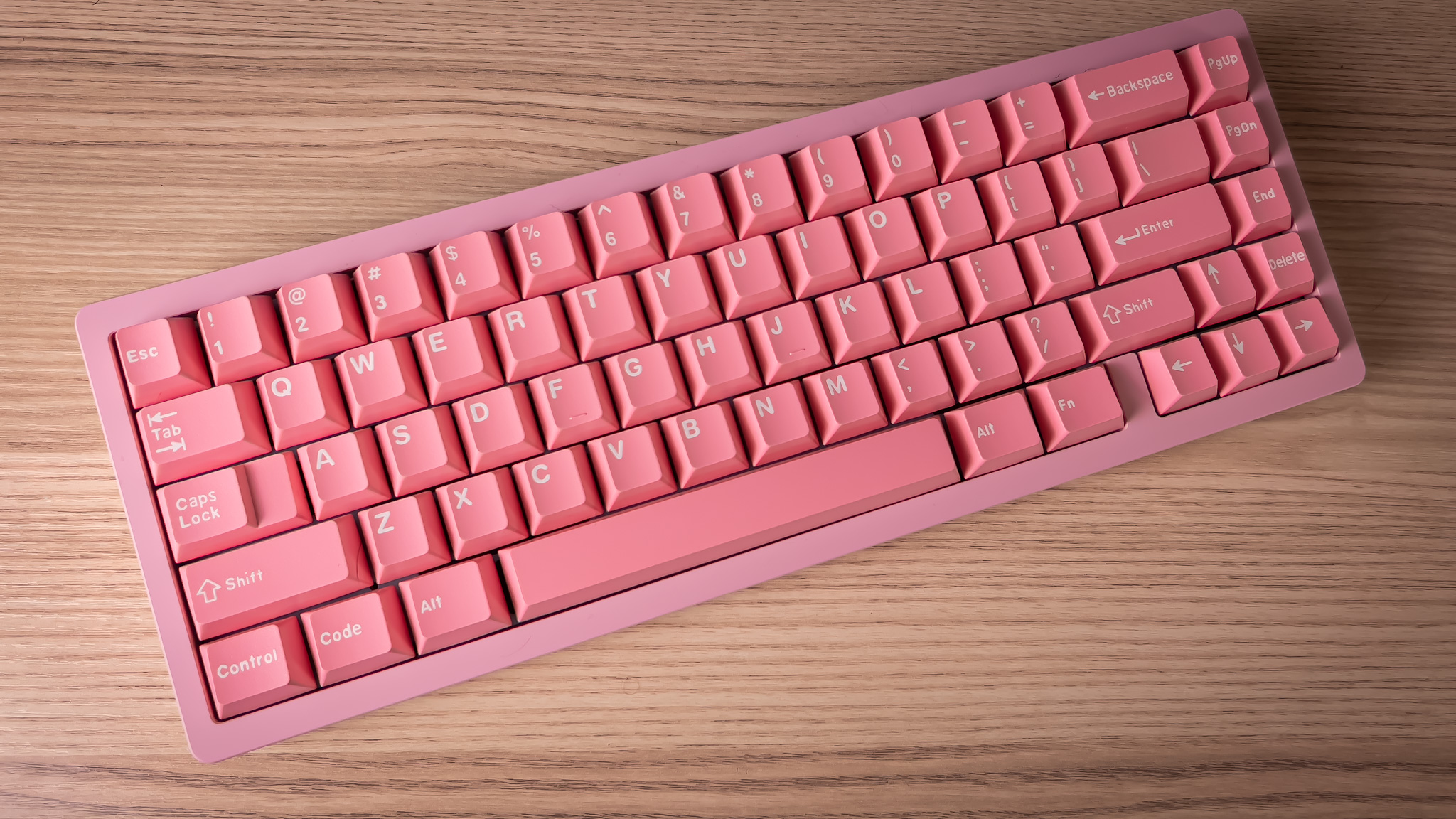


The JRIS65 is a gasket mount barebones mechanical keyboard kit that comes with almost everything you need to get started with your first board except switches, keycaps, and stabilizers. The JRIS65’s starting price of $165 is pretty generous to begin with, but I would have appreciated a set of clip-in Cherry stabilizers, which are included with other similarly-priced custom kits such as the CannonKeys Bakeneko.
The JRIS65 may not come with stabilizers, but it does come with just about everything else, including a carrying case, IXPE foam, PCB tape, gasket jackets/socks, shims, rubber feet, PCB, POM plate, screws, poron plate and case foam, a coiled Type-C to Type-A cable, a cleaning cloth, a clear sheet to protect the chrome finish on the weight, and a silicone battery compartment cover if you get the wired version (the wireless version just comes with a battery).
Gasket mount mechanical keyboards have grown in popularity over the last year, but many of them barely meet the mark. Most gasket mount boards take poron foam pads, slap them onto the switch plate and call it a day — which works, to a degree, but can be a bit disappointing. However, the JRIS65 does things differently by adding flex cuts to the PCB as well as two different build methods.
The JRIS65 can utilize either gasket socks or jackets; after trying both, I much prefer the latter. The gasket socks wrap around the tabs on the PCB, like the name entails, whereas the jackets just go on the edges. While the socks are the same material, I found that the socks provided a firmer rebound. IRISLabs also only included nine gasket socks (10 are needed), so when I tested them I had to use a set of jackets on one of the tabs.
Get Tom's Hardware's best news and in-depth reviews, straight to your inbox.
Now that I have the internals out of the way, we need to discuss the exterior of the JRIS65 because it is gorgeous. The bottom case of the JRIS65 features a steel chroma PVD weight, which meshes beautifully with the anodized pink chassis. If you’re not a fan of pink, the JRIS65 will also be available in E-white, yellow, black, milky white, maroon, titanium grey, navy blue and a few multi-colored options. The rainbow chroma PVD weight isn’t your only option here either, as IRISLabs also offers this board with anodized aluminum, featuring black, silver, and gold. More options, along with plate materials can be found in the Geekhack thread.
Like most custom boards, the JRIS65 features QMK and VIA support, allowing you to explore your wildest dreams in key configurations.
Assembling the JRIS65
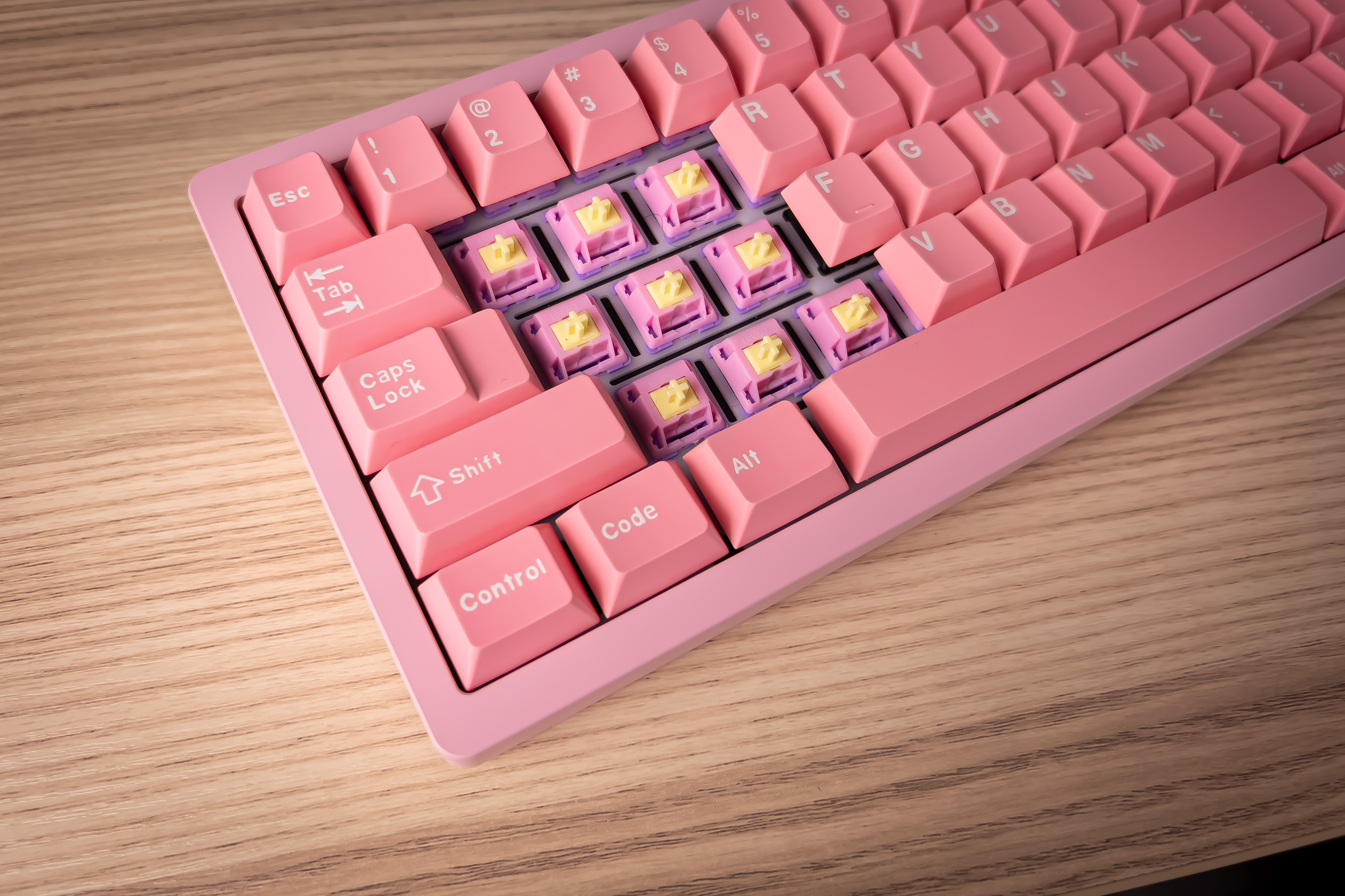
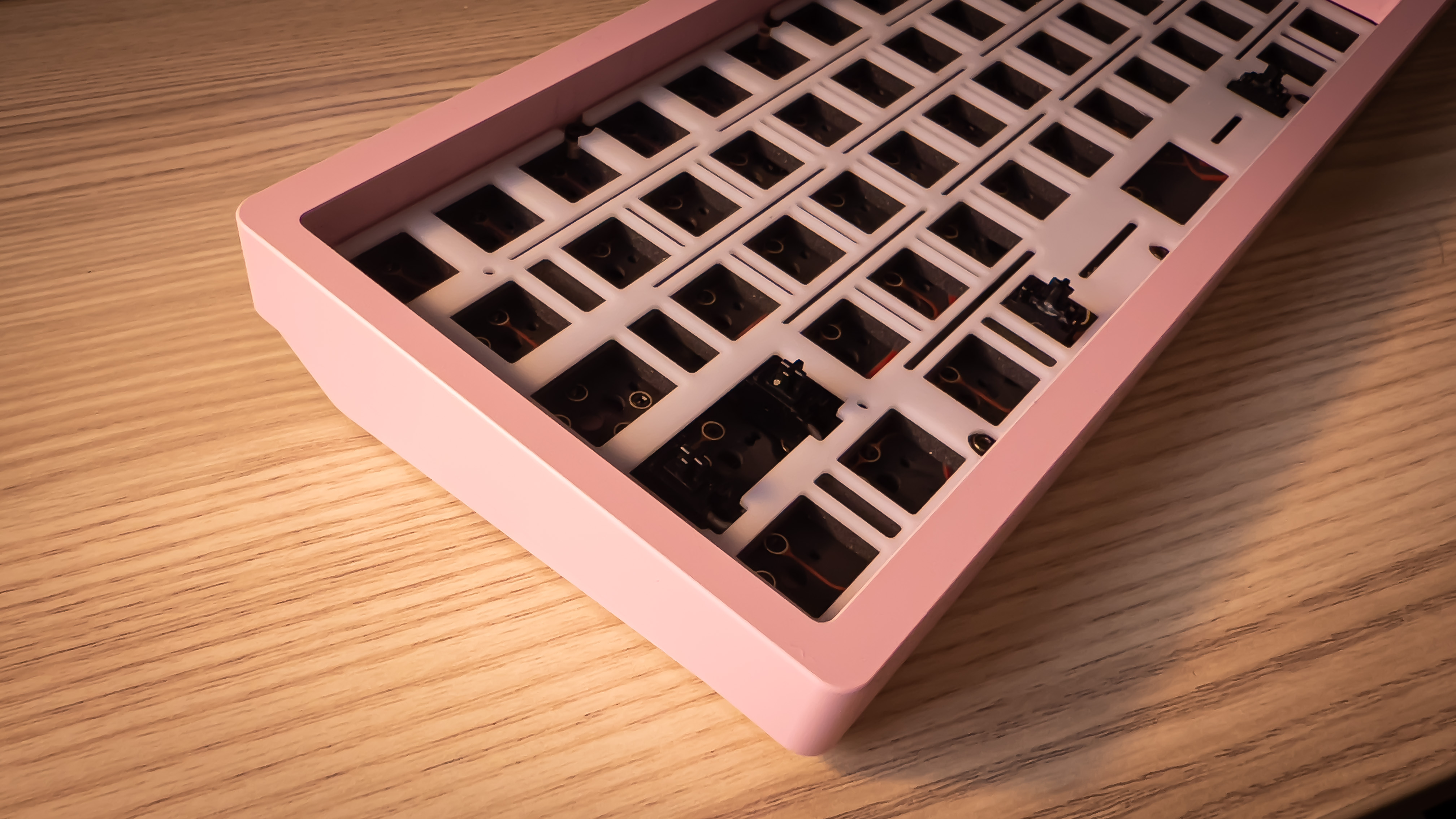

Assembling the JRIS65 was pretty simple; I only hit two bumps in the road. I decided to use the following configuration: case foam, PCB, case foam, switch plate, and gasket jackets instead of socks. The JRIS65 did include two other pieces of foam, but I didn’t deem them necessary. My review model was pink, so I decided to use my C3 Equalz Banana Split switches, which matched the case perfectly.
Since my review sample shipped with the incorrect amount of gasket socks, I used the jackets on the remaining gasket tab (it’s the same material, so it’s close enough). Because the socks covered the entire tab, I found that the sound and bounce was too tame for my liking. The jackets, on the other hand, felt more responsive and satisfying to type with. After trying both builds, the socks came off but the jackets stayed on.
Installing the switches was easy enough, but the flex from the POM switch plate made switch installation a bit clumsy. I recommend that you keep fine nose tweezers nearby in case switch pins end up bending.
Because the JRIS65 utilizes a daughterboard, a JST cable is needed — and boy, was it a pain to connect. The JST cable was oddly short and the installation was so awkward that I didn’t want to take the board apart again. However, once the board was assembled, all of my frustrations were thrown out the window because it was worth the hassle.
Typing and Gaming Experience on the IRISLabs JRIS65
Despite being a gasket mount board, the JRIS65 had less bounce than others that I’ve tried, such as the CannonKeys Bakeneko — but that’s okay. It’s hard to explain, but the typing experience felt very controlled and the flex wasn’t overwhelming. Each keystroke had the right amount of bounce and, well, it’s just so satisfying to type with.
After taking the JRIS65 apart, I installed the new Drop (Gateron) Holy Panda X’s, along with its new DCX profile keycaps. While typing on the JRIS65 was already very enjoyable with linear switches installed, the tactile bump from the Holy Panda switches added some oomph to the typing experience.
Again, the overall typing experience with the JRIS65 felt controlled, and managed to perfectly bridge the gap between bouncy and stiff.
The JRIS65 doesn’t have an overwhelmingly high polling rate, nor does it have RGB — this keyboard wasn’t exactly designed to participate in a Valorant tournament. However, it is a mechanical keyboard kit: with the right switches, it can still play ball. Because it’s a barebones kit, you can use any MX-style switch you want — whether it’s something fast, such as Kailh Speed Silvers, or heavy, such as Gateron Oil Kings.
My game of choice was Call of Duty: Vanguard, since the new zombies map was recently released. The JRIS65 worked fine in-game, but I wouldn’t pick this over a gamer-oriented 65 percent keyboard such as the Asus ROG Falchion NX.
Software for the IRISLabs JRIS65
Like most custom mechanical keyboards (both kit form and not), the JRIS65 is supported by open-source firmware/software QMK/VIA. QMK is a bit dated and requires fairly extensive coding, but VIA is more accessible, and is one of the best keyboard configuration softwares for remapping keys, customizing layout, and recording macros (as well as configuring lighting, but the JRIS65 has no RGB).
My full-time job consists of a lot of data entry within Excel, so it’s a bit hard to get to know a board when I’m working. However, because VIA is so quick and easy, I set up a numpad in the second layer. Was it practical? Not really, but it was better than the standard number row. The JRIS65 has onboard memory and can store up to four profiles in QMK/VIA.
Bottom Line
The IRISLabs JRIS65’s starting price of $165 leaves you with enough bread to buy more expensive switches or caps, but, aside from the C3 Equalz Banana Splits, I built mine using relatively affordable parts. My keycaps are GMK Peach Blossom clones (I missed the group buy, OK), which I bought on Amazon for $45, and the stabilizers are Cherry clip-ins — which are killer, once modded. This ends up being less than $300 for an amazing custom keyboard.
The custom mechanical keyboard hobby, with its long group buy wait times and not-insignificant prices, isn’t for everyone. But if you’re looking to get started, the JRIS65 is a beautiful, well-built, and relatively affordable custom barebones kit. However, if you’d rather stick with something pre-built, Keychron’s Q-series, which includes the 65 percent Keychron Q2 and the 75 percent Keychron Q1, is packed with enthusiast features and is relatively affordable.

Myles Goldman is a freelance writer for Tom's Hardware US. He reviews keyboards and cases.

